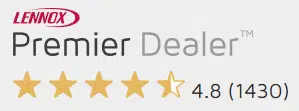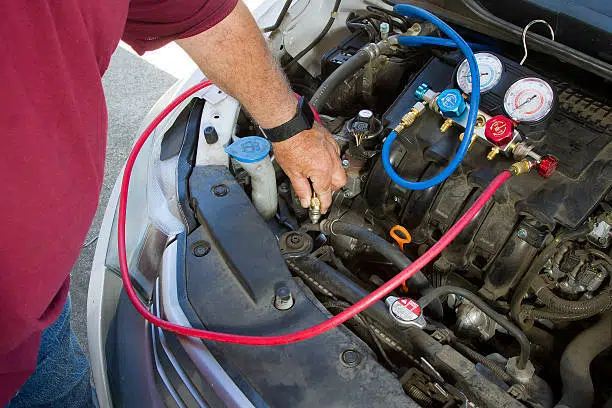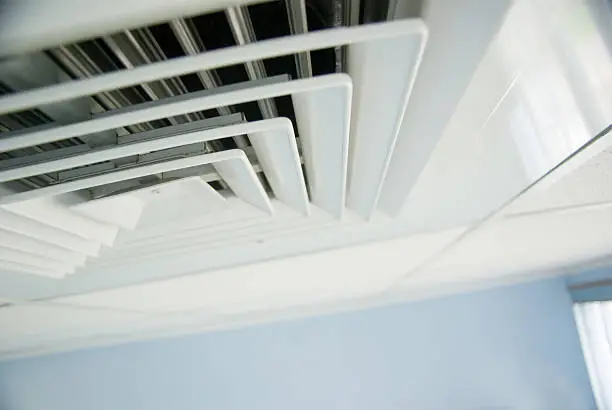
Table of Contents
- Basics of HVAC Vents
- Definition and Roles of Supply and Return Vents
- Importance of Identifying and Maintaining HVAC Vents
- What are Supply Vents?
- What are Return Vents?
- Key Differences Between Supply and Return Vents
- How to Identify Supply Vents
- How to Identify Return Vents
- Common Mistakes in Identifying Vents
- Maintenance Tips for Supply and Return Vents
- Conclusion
- FAQ
In the heart of every comfortable home or commercial space lies an efficient HVAC system. These systems are designed to regulate temperature, humidity, and overall air quality, ensuring a comfortable and healthy indoor environment. A crucial part of these systems involves the proper functioning and identification of supply and return vents. These vents play a vital role in maintaining optimal airflow, which in turn impacts the efficiency and effectiveness of your HVAC system.
Understanding the difference between supply and return vents, and knowing how to identify them, is essential for both homeowners and HVAC professionals. This guide aims to provide you with comprehensive knowledge on supply and return vents, their functions, how to identify them, and the importance of proper maintenance.
Basics of HVAC Vents
Before diving into the specifics of supply and return vents, it’s important to understand the basic principles of HVAC systems. An HVAC system is designed to control the climate within a building by managing the air temperature, humidity, and cleanliness. This is achieved through a network of ducts and vents that distribute conditioned air throughout the space.
Definition and Roles of Supply and Return Vents
Supply Vents are responsible for delivering conditioned air from the HVAC system into various rooms. This air could be heated or cooled, depending on the season and the settings of your HVAC system. The primary role of supply vents is to ensure that every room receives an adequate amount of conditioned air to maintain a consistent and comfortable temperature.
Return Vents, on the other hand, are designed to pull air from the rooms back into the HVAC system. This air is then filtered, conditioned, and recirculated through the system. The main function of return vents is to ensure a continuous loop of airflow, which is essential for maintaining indoor air quality and system efficiency.
Importance of Identifying and Maintaining HVAC Vents
Proper identification and maintenance of supply and return vents are crucial for several reasons:
- Efficiency: Correctly identified vents ensure that the HVAC system operates efficiently, reducing energy consumption and costs.
- Comfort: Proper airflow distribution helps maintain a consistent temperature and humidity level throughout the building.
- Air Quality: Regular maintenance of vents prevents the buildup of dust, debris, and allergens, promoting a healthier indoor environment.
- Longevity: A well-maintained HVAC system with clean and correctly functioning vents will have a longer lifespan and require fewer repairs.
What are Supply Vents?
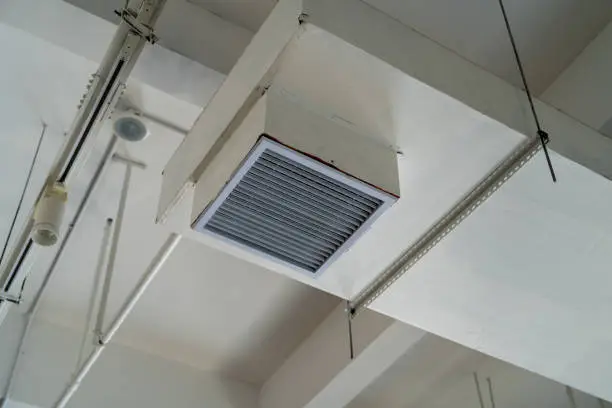
Supply vents are the outlets through which conditioned air from your HVAC system enters your living or working space. They are designed to distribute heated or cooled air throughout the building, ensuring that each room reaches the desired temperature.
Typical Locations
Supply vents are usually located on the floors, walls, or ceilings of rooms. Their placement is strategic to ensure optimal airflow and comfort. In homes, you might find supply vents in living rooms, bedrooms, and common areas. In commercial buildings, they are often located in offices, conference rooms, and other areas where people gather.
How Supply Vents Work
Supply vents are connected to the ductwork of your HVAC system. When the system is running, air is pushed through the ducts and out of the supply vents. The air is typically directed downward if the vent is on the ceiling or upward if the vent is on the floor. The direction and volume of airflow can often be adjusted using the vent’s louvers.
Common Characteristics
Supply vents come in various shapes and sizes, but they usually have adjustable louvers or grilles to control the direction and volume of airflow. They are often rectangular or square and can be made from metal or plastic. The air coming from supply vents is usually at a different temperature than the ambient air, either warmer during the winter months or cooler during the summer.
What are Return Vents?
Return vents serve as the intake points for your HVAC system. They pull air from the rooms and return it to the HVAC unit for filtering and reconditioning. This process is essential for maintaining a balanced airflow and consistent air quality throughout the building.
Typical Locations
Return vents are commonly found in hallways, near staircases, or in larger open areas. They are usually placed high on walls or on the ceilings to efficiently capture the rising warm air, especially during the cooling season. In homes, return vents can also be found in living rooms, bedrooms, and sometimes in closets.
How Return Vents Work
Return vents are connected to the ductwork that leads back to the HVAC system. As air is pulled into these vents, it travels through the ducts back to the HVAC unit, where it is filtered and reconditioned before being redistributed through the supply vents. This continuous loop is crucial for maintaining indoor air quality and system efficiency.
Common Characteristics
Return vents are typically larger than supply vents and do not have adjustable louvers. They often have a simple grille design and can be rectangular or square. The air entering return vents is usually at ambient room temperature and may carry dust, allergens, and other particles that need to be filtered out by the HVAC system.
Key Differences Between Supply and Return Vents
Understanding the key differences between supply and return vents is essential for identifying them correctly and ensuring your HVAC system functions optimally. These differences are primarily based on airflow direction, temperature of the air, visual and structural characteristics, and noise levels. Let’s explore each of these factors in detail.
Airflow Direction
The most significant difference between supply and return vents is the direction of airflow. Supply vents blow air into the room, while return vents pull air out of the room. This difference in airflow direction is a key factor in identifying the two types of vents.
Temperature of the Air
Another distinguishing factor is the temperature of the air coming from the vents. Air from supply vents is conditioned by the HVAC system, so it is either heated or cooled. In contrast, air entering return vents is at ambient room temperature, as it has not yet been conditioned by the system.
Visual and Structural Differences
Supply vents often have adjustable louvers that allow you to control the direction and volume of airflow. They are generally smaller than return vents and can be found on floors, walls, or ceilings. Return vents, on the other hand, are larger and do not have adjustable louvers. They are typically located higher on walls or ceilings.
Noise Levels
Noise can also help distinguish between supply and return vents. Supply vents may produce a noticeable sound as air is pushed through them, especially when the HVAC system is running at high capacity. Return vents are usually quieter, as they pull air in more passively.
Comparative Table of Key Differences
To summarize the differences between supply and return vents, here is a detailed comparative table:
Feature | Supply Vents | Return Vents |
|---|---|---|
Airflow Direction | Whole-home coverage (up to 1600 CFM) | Pulls air out of the room |
Temperature of the Air | Heated or cooled by the HVAC system | Ambient room temperature |
Visual Characteristics | Smaller, adjustable louvers, various locations (floors, walls, ceilings) | Larger, simple grille, higher placement (walls, ceilings) |
Structural Characteristics | Adjustable louvers for airflow control | No adjustable louvers |
Noise Levels | May produce noticeable sound | Usually quieter |
By understanding these key differences, you can accurately identify and maintain your HVAC system’s supply and return vents, ensuring optimal performance and indoor air quality.
How to Identify Supply Vents
Visual Inspection Tips
When identifying supply vents, look for the following visual cues:
- Location: Supply vents are often located on floors, walls, or ceilings in rooms where you spend most of your time.
- Design: They typically have adjustable louvers or grilles.
- Size: Supply vents are usually smaller than return vents.
Checking Airflow Direction
To confirm if a vent is a supply vent, place your hand near it while the HVAC system is running. If you feel air being blown out, it’s a supply vent. You can also use a piece of tissue or paper; if it flutters away from the vent, it indicates outward airflow.
Using Tools and Gadgets
Anemometers are useful tools for measuring airflow. Hold the anemometer near the vent while the system is running. If it registers a positive airflow (air moving out of the vent), you are likely dealing with a supply vent.
How to Identify Return Vents
Visual Inspection Tips
To identify return vents, consider the following tips:
- Location: Return vents are often located in hallways, near staircases, or in larger open areas. They are typically placed higher on walls or ceilings.
- Design: They usually have a simple grille design without adjustable louvers.
- Size: Return vents are generally larger than supply vents.
Checking Airflow Direction
To verify if a vent is a return vent, hold a piece of tissue or paper near it while the HVAC system is running. If the tissue or paper is drawn towards the vent, it indicates inward airflow, confirming it is a return vent.
Using Tools and Gadgets
Anemometers can also be used to identify return vents. When held near the vent, a return vent will show a negative airflow (air being pulled into the vent) on the anemometer.
Common Mistakes in Identifying Vents
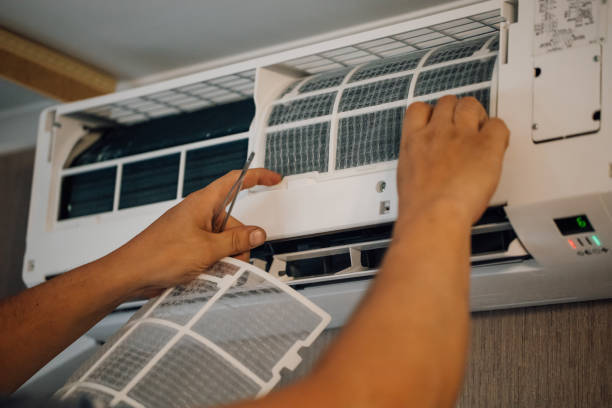
Identifying supply and return vents correctly is crucial for maintaining an efficient HVAC system. However, there are common mistakes people often make during this process. Here are some of these mistakes and how to avoid them:
- Misidentification Due to Similar Design: One common mistake is misidentifying vents due to their similar design. Some supply and return vents can look quite similar, especially if they are of the same size and shape. It’s important to rely on airflow direction and location rather than just appearance.
- Overlooking Dual-Purpose Vents: In some HVAC systems, certain vents might serve dual purposes, acting as both supply and return vents at different times. This can be confusing, but these are typically found in more complex or older systems. Modern systems usually have distinct vents for supply and return functions.
- Misinterpreting Airflow Due to Obstructions: Obstructions such as furniture, curtains, or other objects can affect the airflow from vents, making it difficult to accurately identify them. Ensure that the area around the vents is clear when checking airflow direction.
Maintenance Tips for Supply and Return Vents
Proper maintenance of supply and return vents is crucial for the efficiency and longevity of your HVAC system. Here are some essential tips to keep your vents in optimal condition:
- Cleaning and Dusting: Regular cleaning and dusting of vents are essential to prevent the buildup of dust and debris. Use a vacuum with a brush attachment or a damp cloth to clean the vents. This not only improves air quality but also ensures efficient airflow.
- Checking for Blockages: Ensure that there are no blockages obstructing the vents. Furniture, rugs, or other objects should not be placed in front of supply or return vents, as this can hinder airflow and reduce system efficiency.
- Ensuring Proper Ventilation and Airflow: Regularly inspect your vents to ensure they are not blocked and that air is flowing freely. Check that the louvers on supply vents are open and adjusted properly. For return vents, make sure that the grille is not clogged with dust or debris.
For comprehensive and professional maintenance, trust the experts at HVAC Service Solutions. Our team is dedicated to ensuring your HVAC system operates at peak performance, providing you with a comfortable and healthy indoor environment. Contact us today for all your HVAC maintenance needs.
Conclusion
Understanding the differences between supply and return vents, and knowing how to identify and maintain them, is essential for the efficiency and longevity of your HVAC system. Proper airflow management ensures a comfortable indoor environment, improved air quality, and reduced energy costs.
Regular maintenance, including cleaning and inspecting your vents, is crucial. If you encounter any issues or have questions about your HVAC system, don’t hesitate to contact HVAC Service Solutions for professional assistance. Our team of experts is here to help you maintain a comfortable and healthy indoor environment.
Frequent Asked Questions
How often should I clean my HVAC vents?
It’s recommended to clean your HVAC vents at least once every three months. Regular cleaning helps prevent the buildup of dust and debris, which can obstruct airflow and reduce system efficiency. If you have pets or suffer from allergies, you might need to clean them more frequently, as pet hair and allergens can accumulate quickly. Ensuring that cold air return vents are clean is particularly important because they pull in air from your living spaces, and any dust or debris can be recirculated. Use a vacuum with a brush attachment or a damp cloth to clean the vents. Regular maintenance of cold air return vents can also improve indoor air quality, reducing the presence of allergens and pollutants. Keeping your vents clean will help maintain optimal HVAC performance and extend the lifespan of your system.
Can I close supply vents in unused rooms to save energy?
Closing supply vents in unused rooms might seem like a good way to save energy, but it can actually disrupt the balance of airflow in your HVAC system. This can lead to increased pressure in the ductwork, which can cause leaks and reduce overall efficiency. Additionally, closing vents can make your HVAC system work harder to maintain the desired temperature, potentially leading to higher energy costs and wear on the system. It’s important to keep cold air return vents open as well to ensure proper airflow and system function. Instead of closing vents, consider using zoning systems or adjusting the thermostat to better manage energy use. By keeping all vents, including cold air return vents, open and clear, you can maintain a balanced and efficient HVAC system.
How can I tell if a vent is a supply vent or a return vent?
To identify whether a vent is a supply vent or a return vent, you can perform a simple test. Place your hand near the vent while the HVAC system is running. If you feel air blowing out, it’s a supply vent. If air is being pulled in, it’s a return vent. Supply vents are generally smaller and may have adjustable louvers to control the direction and volume of airflow. Return vents, particularly return vents, are larger and usually have a simple grille design without adjustable louvers. These vents are crucial for pulling air back into the HVAC system to be reconditioned. Understanding the difference between these vents can help you maintain and troubleshoot your HVAC system more effectively.
Why is one room warmer or cooler than others?
Temperature imbalances in different rooms can be caused by several factors. Improper vent placement, blockages in the ductwork, or issues with the HVAC system itself can all contribute to uneven heating or cooling. Cold air return vents play a significant role in maintaining consistent temperatures by ensuring proper airflow and circulation. If a room is warmer or cooler than others, check to ensure that the vents are open and unobstructed. It might also be necessary to balance the ductwork, which can involve adjusting the dampers or sealing leaks. An HVAC professional can help diagnose and fix these issues, ensuring that return vents and other components are functioning correctly to maintain even temperatures throughout your home.
What should I do if my vents are making noise?
Noisy vents can be a sign of several issues within your HVAC system. Loose components, blockages, or high air pressure can all contribute to unwanted noise. Start by inspecting the vents and ductwork for any visible obstructions or loose parts. Cleaning the vents, especially the return vents, can help reduce noise by ensuring that airflow is not obstructed. If the noise persists, it may indicate a more serious issue such as high static pressure in the ductwork or an imbalance in the system. Contacting an HVAC professional is recommended to diagnose and address the root cause of the noise. Regular maintenance, including keeping return vents clean and clear, can help prevent noise issues and maintain system efficiency.
Can obstructions around vents affect HVAC performance?
Yes, obstructions around vents can significantly impact the performance of your HVAC system. Furniture, rugs, curtains, or other objects blocking supply or return vents can hinder airflow, making your system work harder to maintain the desired temperature. This can lead to increased energy consumption and higher utility bills. Cold air return vents are particularly important to keep clear, as they are responsible for pulling air back into the system to be reconditioned. When these vents are blocked, it disrupts the balance of airflow, reducing the system’s efficiency. To ensure optimal performance, regularly check and clear any obstructions around all vents, especially return vents. Maintaining unobstructed airflow will help your HVAC system run more efficiently and effectively.
Are there vents that serve both supply and return functions?
In some older or more complex HVAC systems, certain vents might serve dual purposes, acting as both supply and return vents at different times. However, this is not common in modern systems, which typically have distinct vents for supply and return functions. Dual-purpose vents can be confusing, but they are usually designed with specific mechanisms to switch functions as needed. It’s important to understand the specific configuration of your HVAC system to ensure proper maintenance and function. Cold air return vents, in particular, should be identified and maintained separately to ensure efficient operation. Consulting your HVAC system’s manual or a professional can help you determine if any vents in your system serve dual purposes. Properly maintaining and identifying all vents, especially return vents, is crucial for the overall efficiency of your HVAC system.
What are the signs that my HVAC vents need professional maintenance?
Several signs can indicate that your HVAC vents need professional maintenance. Weak airflow from supply vents, unusual noises, uneven temperatures across different rooms, and increased dust or allergens in the air are common indicators. Additionally, if your energy bills are rising without a clear reason, it might be due to inefficiencies in the HVAC system. Return vents that are dirty or clogged can significantly affect system performance and indoor air quality. Regular professional maintenance can help identify and address these issues before they become major problems. HVAC professionals have the expertise and tools to thoroughly clean and inspect your system, ensuring that all components, including return vents, are functioning properly. Scheduling regular maintenance can help extend the life of your HVAC system and maintain a comfortable indoor environment.
How do I ensure proper airflow from my supply vents?
Ensuring proper airflow from your supply vents involves several steps. First, check that the vents are not blocked by furniture, rugs, or other objects. Keep the louvers open and adjust them to direct airflow where it’s needed most. Regularly cleaning the vents, including the return vents, helps prevent dust and debris buildup that can obstruct airflow. Inspect your ductwork for any leaks or blockages that could impede airflow. Balancing the system by adjusting the dampers in the ductwork can also help ensure even distribution of air. If you notice weak airflow or other issues, contacting an HVAC professional for a thorough inspection and maintenance can help. Proper airflow management, including maintaining clean and unobstructed return vents, is essential for efficient and effective HVAC operation.
Who should I contact for professional HVAC maintenance?
For professional HVAC maintenance, it’s best to contact a reputable and experienced HVAC service provider. HVAC Service Solutions offers comprehensive maintenance services to ensure your system operates at peak performance. Our team of experts is trained to handle all aspects of HVAC maintenance, from cleaning and inspecting vents to diagnosing and repairing complex issues. Regular maintenance, including the cleaning and inspection of return vents, is crucial for maintaining system efficiency and indoor air quality. Whether you need routine maintenance or have specific concerns about your HVAC system, HVAC Service Solutions is here to help. Contact us today to schedule an appointment and ensure your HVAC system continues to provide a comfortable and healthy indoor environment.
Share
